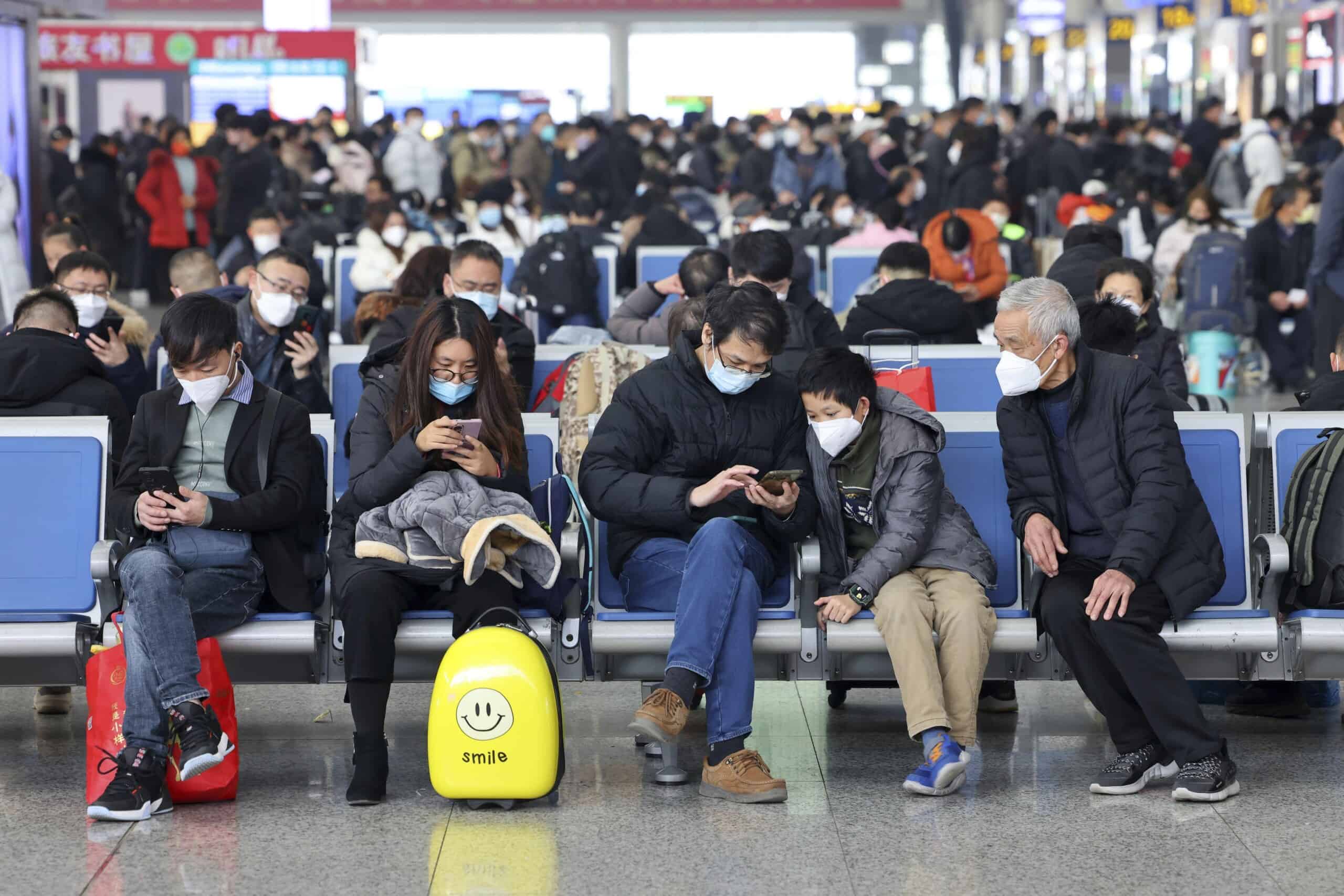
Long critical of Chinese censorship and Communist Party verbiage, world financial markets have enthusiastically embraced Beijing’s spin heralding a powerful post-Zero Covid reopening. Western media are similarly enthusiastic. In a breathless recent cover story, The Economist concluded that “China’s reopening will be the biggest economic event of 2023.” Just like that, the perfect storm is apparently about to turn into a beautiful day.
Proponents of the reopening play concede that there will be some bumps in the road as China works through the near-term difficulties that have arisen from the wholesale abandonment of an absurdly impractical zero-Covid policy. But both Beijing and the broad consensus of investors are more than willing to ignore these bumps.
Never mind that we have no idea of how to dimension the bumps. To the displeasure of the World Health Organization, we are being asked to swallow this dramatic about-face on policy — a first for Xi Jinping — without any hard data documenting the full extent of its ramifications for the rapid Covid spread that is now engulfing China. Yes, it is widely understood that Omicron is far less lethal than earlier variants of Covid. Beijing has hung its defense of the policy shift on this one point — relaxing its management of Covid from a plague-like Class A outbreak to a so-called Class B virus that is reserved for less serious diseases like HIV and hepatitis. Arguing that the current outbreak is no worse than “a bad flu,” beleaguered Chinese health authorities now claim “scientific justification” for dropping once draconian quarantine and testing requirements.
As I see it, when the dust settles on the coming snapback, China’s chronic growth problems are likely to resurface with a vengeance.
All this, of course, flies in the face of the unique aspects of a raging outbreak now afflicting the world’s most populous nation — namely, the nation’s relative lack of herd immunity, low-quality domestic vaccines, under-vaccinated elderly, and limited intensive care capacity in its woefully underdeveloped hospital system. It also ignores the urban-to-rural spread of the virus that is about to be unleashed by travel-starved Chinese returning home for the upcoming Chinese New Year’s holiday for the first time in three years, often to villages where China’s healthcare deficiencies are most pronounced.
For China, the reopening gambit borrows a page out of its standard playbook — activating the policy levers of state control to compensate for a worrisome growth shortfall. As well as the reversal of zero-Covid, Beijing has in recent weeks relaxed constraints on the country’s beleaguered property sector and made an effort to walk back earlier regulatory pressures on its once high-flying tech sector. This trifecta of stimulus actions is well-timed to hit the economy at its nadir, sparking the sort of upturn that has long made China famous.
The conclusion that a recovery is imminent is correct in one important sense: Covid-related lockdowns retard economic growth, and when they are reduced, an arithmetic snapback occurs. As a teaching device, I have always told my classes to think of this as the “rubber band effect” — underscoring the snapback that automatically happens when a taut rubber band is released. That is exactly what happened in China after the Wuhan lockdown of early 2020 and then with a one-quarter lag in other major economies around the world. China’s coming reopening — whether it takes one to three quarters to appear — is unlikely to be any different.
Senior regulators now claim that the worst is over for constraints on Internet platform companies. They must be gratified by the Pavlovian response of investors to buy sharply depressed Chinese tech shares in recent days.
But then what happens? Will the stimulus spark cumulative increases — the so-called economic multiplier effects — in an extremely weak Chinese economy? That is actually the most important question of all and where my now cautious view on China comes into play. As I see it, when the dust settles on the coming snapback, China’s chronic growth problems are likely to resurface with a vengeance. Multiplier effects work best when underlying economic growth foundations are solid. That is not the case in China today. With its working age population declining due to demographic headwinds that are likely to persist for at least another 25 years, China needs an acceleration in productivity growth to compensate and sustain overall economic growth at a reasonable pace. Yet there is good reason to believe that the opposite will occur.
Chinese total factor productivity growth, which has been declining for a decade, is likely to continue on a downward path for the foreseeable future. At work is the confluence of regulatory pressures on its once dynamic Internet sector; diminished incentives for risk-taking entrepreneurs in an era of “common prosperity;” a tech conflict with the United States which could take a serious toll on the embryonic AI and quantum computing efforts that have long underpinned Chinese aspirations for indigenous innovation; and the risks of a military over-stretch associated with a security-focused China’s more muscular foreign policy and the concomitant potential for a cold war collision with the United States.
Here, as well, Beijing’s spin is hard at work in attempting to ease concerns. Senior regulators now claim that the worst is over for constraints on Internet platform companies. They must be gratified by the Pavlovian response of investors to buy sharply depressed Chinese tech shares in recent days. But the enduring tight controls on the activities of these companies — video streaming, gaming curfews, online music, fan culture, ridesharing, and private tutoring — don’t exactly promise a return to dynamism from what had been the most rapidly growing and exciting segment of the Chinese economy.
Steeped in ideology and party dogma, and plagued by non-transparency, censorship, and information distortion, China’s spin machine is now in overdrive.
Count me among those who worry more about what comes after the short-term snapback — both for China, as well as for a global economy that has long been heavily dependent on China’s legacy of hyper growth. China’s five-year GDP growth rate is likely to average just 4.8 percent in 2023 — well less than half the peak five-year growth rate of 11.7 percent recorded in 2007. China is not the growth engine it used to be.
Putting it another way, in Xi Jinping’s first two terms, spanning 2013 to 2022, Chinese economic growth averaged 6.25 percent, well below the 10 percent pace that the so-called Deng Xiaoping model delivered from 1980 to 2010. And in light of the demographic and productivity considerations noted above, there is good reason to believe that Chinese economic growth in Xi’s second ten years will slow even further.
For Xi, this has become personal: China’s aggressive about face on policy reflects the growing discomfort the “leader for life” must be feeling about whether he can deliver on the economic bargain that underpins the aspirational rejuvenation promised in his fabled Chinese Dream.
You would never know that from the post-Covid spin embraced by the unlikely consensus between Beijing and western financial markets. Steeped in ideology and party dogma, and plagued by non-transparency, censorship, and information distortion, China’s spin machine is now in overdrive. But the message behind the spin is worrisome: The standard Chinese policy playbook is unlikely to be effective in countering a corrosive weakening in the economy.
Click here to read another opinion piece from Stephen Roach on China’s labor market.

Stephen S. Roach, a faculty member at Yale University and former Chairman of Morgan Stanley Asia, is the author of the forthcoming Accidental Conflict: America, China, and the Clash of False Narratives (Yale University Press, November 2022).



